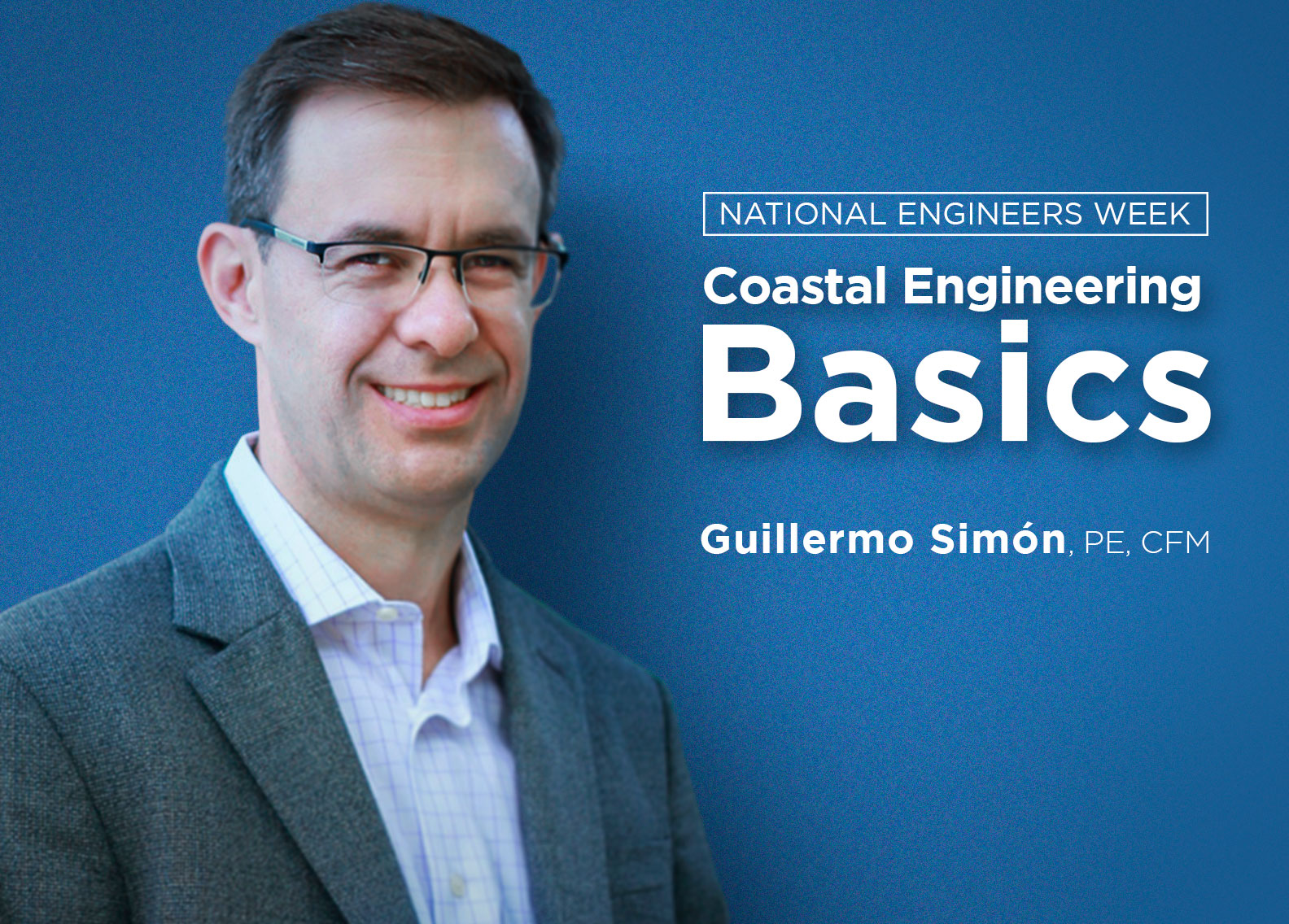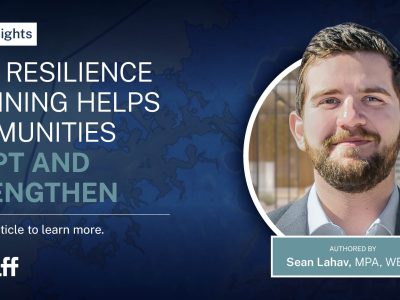The Basics of Coastal Engineering and Protecting Our Shoreline
Happy Engineers Week 2022!
Founded by the National Society of Professional Engineers in 1951, EWeek is dedicated to raising awareness of engineers’ positive contributions to our daily lives and inspiring the next generation of engineering enthusiasts.
Here’s to reimagining the possible, which is this year’s EWeek theme!
Designing projects along our shoreline is one of the most challenging and critical tasks for civil engineers today and into the future.
According to the National Oceanic and Atmospheric Administration (NOAA), about 40 percent of the U.S. population resides in a coastal county. California, New York, Florida, New Jersey and Texas top the list of states with the greatest coastal populations.
Americans living in those dense coastal areas face several risks—shrinking land mass due to population growth, erosion and sea level rise, plus violent storms such as hurricanes—to name a few. NOAA’s 2022 Sea Level Rise Technical Report projects a 10- to 12-inch sea level rise along the U.S. coastline over the next 30 years.
Our shoreline is also home to delicate ecosystems that must be protected for generations to come.
Director of Water Resources Guillermo Simon, PE, CFM, a coastal engineer, addresses some of the key questions surrounding engineering projects where the water meets the land.
How would you define coastal engineering?
Coastal engineering is the branch of civil engineering that deals with the land’s edge. Engineers in the coastal environment study, design and build under a different, more dynamic set of forces.
Can you describe a few basic coastal engineering design strategies that are changing as a result of sea level rise?
Incorporating tides into our design strategies is not new. What has changed over the last few decades is where the tide is. For existing infrastructure, a higher tide means a shorter level of service or a more expensive retrofit. For new infrastructure, engineers must project where the sea level will be decades from now and design accordingly.
What types of environmental and ecological issues must be considered with coastal development?
People love to live, work and play near water, particularly near the beach. This desire results not only in the development of areas vulnerable to coastal forces, but also in the disruption of fragile environments where marine creatures thrive. This includes marshes and mangroves, marine turtles and birds. A sustainable coastal development protects and preserves these natural resources because they attenuate erosion, storm surge and waves. They also provide unique recreational opportunities.
What are some of the challenges that come with predicting changing weather environments?
Most of the design guidelines available to us result from historical data. How can we know how hurricanes will behave in, say, 50 years? How can we predict changes in rainfall patterns, such as increased droughts or more intense precipitation? Even sea level change predictions, for which we have good trends, are uncertain. The continued use of hydraulic and probabilistic models can help us improve those predictions and, ultimately, develop more resilient communities.
Communicating risk to coastal communities can also be a difficult task. How do you communicate storm surge risk to the public in a way that people will understand, take seriously and respond appropriately to?
Communicating the risk to coastal communities is tough because the message varies with the types of threats. For example, a hurricane’s threat comes from exposure to high winds, storm surge, waves, rainfall, erosion, rip currents and even tornadoes. Therefore, the message for each community depends on location and timing. Regarding storm surge, we need to focus less on the hurricane category—which is based on wind speed—and more on local storm surge depths. Finally, I believe that continued community education and reliance on local officials to provide the message directly is critical to keeping communities safe.
About the Firm
Halff is an award-winning, employee-owned, diverse and multidiscipline professional engineering and architecture firm. For more than 70 years, Halff has provided innovative solutions for clients throughout the United States. Halff is committed to the purpose of improving lives and communities by turning ideas into reality by continuously investing in its employees and fostering a culture of collaboration.
Halff has 28 offices in Arkansas, Florida, Oklahoma, Louisiana and Texas. The firm is ranked No. 97 by Engineering News-Record. Halff is the No. 10 Top Workplace nationally in 2022 as ranked by Energage for businesses with 1,000 to 2,499 employees.



